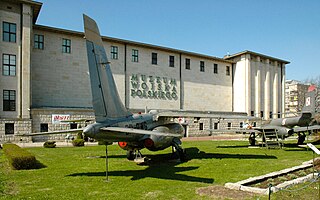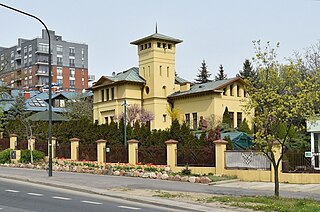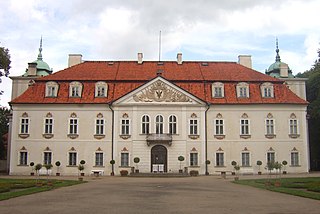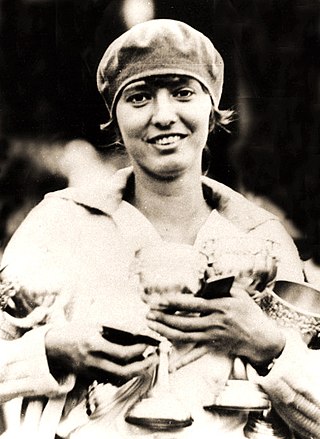Poland's sports include almost all sporting disciplines, in particular: football, volleyball, motorcycle speedway, ski jumping, track and field, handball, basketball, tennis, and combat sport. The first Polish Formula One driver, Robert Kubica, has brought awareness of Formula One Racing to Poland. Volleyball is one of the country's most popular sports, with a rich history of international competition. Poland has made a distinctive mark in motorcycle speedway racing thanks to Tomasz Gollob, Jaroslaw Hampel, Bartosz Zmarzlik, Maciej Janowski and Rune Holta. Speedway is very popular in Poland. They won the world cup (2014), and the Polish Extraleague has the highest average attendances for any sport in Poland. The Polish mountains are an ideal venue for hiking, skiing and mountain biking and attract millions of tourists every year from all over the world. Cross country skiing and ski jumping are popular TV sports, gathering 4–5 million viewers each competition, with Justyna Kowalczyk, Dawid Kubacki, Adam Małysz and Kamil Stoch as the main attractions. Baltic beaches and resorts are popular locations for fishing, canoeing, kayaking and a broad-range of other water-themed sports.

The Warsaw Rising Museum, in the Wola district of Warsaw, Poland, is dedicated to the Warsaw Uprising of 1944. The institution of the museum was established in 1983, but no construction work took place for many years. It opened on July 31, 2004, marking the 60th anniversary of the uprising.

Museum of the Polish Army is a museum in Warsaw documenting the military history of Poland. Established in 1920 under the Second Polish Republic, it occupies a wing of the building of the Polish National Museum as well as several branches in Poland. It is Warsaw's second largest museum and the largest collection of military objects in Poland. The collection illustrates a thousand years of Polish military history, from the 10th century to the Second World War.

The Museum of Evolution of Polish Academy of Sciences is the display area of the natural history museum in Warsaw, Poland. It is the public front of the Muzeum i Instytut Zoologii or Zoology Museum and the Instytut Paleobiologii or Paleobiology Institute. It is based at the Palace of Culture and Science.

The Stacja Muzeum is located at the former Warsaw Główna PKP railway terminus and is very close to the Warszawa Ochota railway station. The museum's exhibits are divided into permanent and temporary collections — the latter being displayed inside the museum's galleries. The permanent collection consists of historic rolling stock that is displayed on the tracks outside, including one of the few remaining armoured railway trains in Europe. The museum also contains a library which houses many books on the subject of Polish railways.

The Museum of Industry and Agriculture is a former museum of technology and agriculture at 66, Krakowskie Przedmieście in Warsaw, Poland.

Warsaw Gasworks Museum is a museum in Warsaw, Poland, located in the complex of the former Wola Gas Factory built in 1886–1888.

The Geological Museum of the State Geological Institute is a museum in Warsaw, Poland. The museum was established in 1919.

The Museum of Polish History or the Polish History Museum is a museum and national cultural institute in Warsaw, Poland. The purpose of the museum is to present the most important events in Polish history, with a particular emphasis on Polish traditions of freedom.

Museum of Caricature is a museum in Warsaw, Poland. The museum was founded by Eryk Lipiński in 1978, and he was the director of the museum until his death in 1991. The museum has a collection of over 20,000 pieces by Polish and foreign artists.

The Fryderyk Chopin Museum is a museum in Warsaw, Poland, established in 1954 and dedicated to Polish composer Frédéric Chopin. Since 2005, the museum has been operated by the Fryderyk Chopin Institute.

Muzeum Historii Polskiego Ruchu Ludowego is a museum in Warsaw, Poland. It was established in 1984. The museum is located in a building known as the ‘Yellow Tavern’. Its focus is the history of the Polish countryside, peasant political parties and other groups. It does not have a permanent collection but offers a range of changing exhibitions.

Museum of Warsaw is a museum in the Old Town Market Place in Warsaw, Poland. It was established in 1936.

Muzeum Sztuki Nowoczesnej w Warszawie is a museum in Warsaw, Poland. It was established in 2005.

Muzeum Zamku i Szpitala Wojskowego na Ujazdowie is a museum in Warsaw, Poland which opened in 1994. It is located in the Ujazdów Castle, in one of the rooms belonging to the Centre for the Contemporary Art, in the north-west tower of the castle. The exhibition includes objects and photographs related to the history of the Ujazdów Castle and the Ujazdów military hospital including portraits of the castle owners and a cornerstone from 1624.

The National Museum of Ethnography is a museum of ethnography in Warsaw, Poland. It was established in 1888.

Nieborów Palace is an aristocratic residence located in the village of Nieborów in Poland. Built in the 17th century by one of the greatest Baroque architects, the Dutchman Tylman van Gameren, the building belongs to one of the most renowned of Poland's aristocratic residences and serves as a museum of interior design of palace residences from the 17th to the 19th century, based on the surviving furniture and collections, featuring portraits of eminent personalities of the era, several thousand drawings and sketches, books, porcelain and textiles.

The 1930 Women's World Games were the third regular international Women's World Games, the tournament was held between September 6 - September 8 at the Letná Stadium in Prague.

The Professor Kazimierz Michałowski Faras Gallery at the National Museum in Warsaw is a permanent gallery at the National Museum in Warsaw, presenting Nubian early Christian art. The Gallery features a unique collection of wall paintings and architectural elements from the Faras Cathedral, discovered by an archeological expedition led by Professor Kazimierz Michałowski.

The Theatre Museum in Warsaw is gathering collections related to the history of Polish and foreign theatres.





















